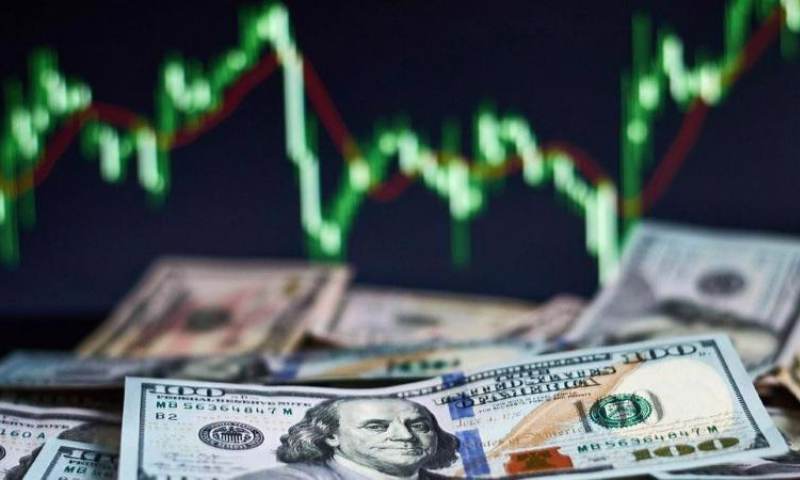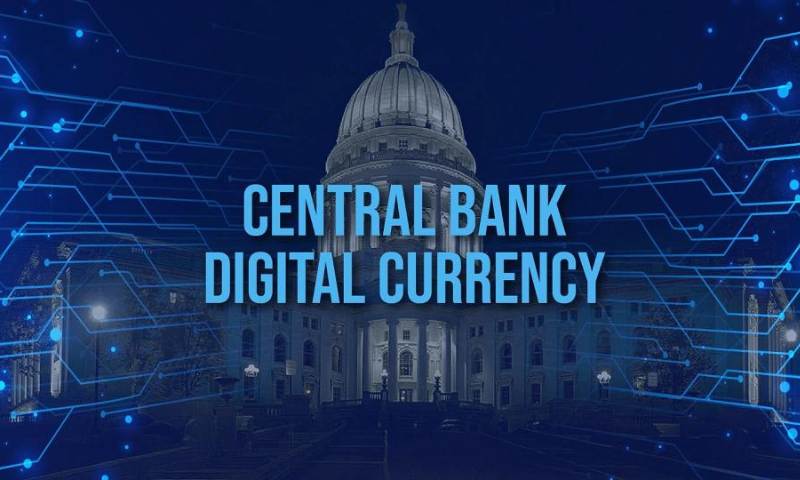Money moves in mysterious ways, or does it? When it comes to central bank interest rates and the stock market, the connection is clear, but the path may not be. As an avid investor, understanding this relationship can mean the difference between growing your portfolio and watching your hard-earned dollars dwindle. Here, I’ll unveil how central bank rates dictate the stock market’s ups and downs. Trust me; it’s a ride you want to navigate with insight and confidence. From the Federal Reserve’s influence to the broader impacts on market indexes, get ready to learn the ropes of monetary policy and its direct hit on your investments.
Central Bank Rates Unveiled: Navigating the Relationship Between Monetary Policy and Equities
Understanding the Federal Funds Rate Impact on Stock Market Dynamics
Picture a car and how you use the gas and brakes. That’s like our Federal Reserve. It uses the federal funds rate as a tool to either speed up or slow down the country’s economy. When they change this rate, it’s big news for the stock market.
Say the Fed hikes rates. This makes it cost more for banks to get money. These banks then charge you more for loans. Higher costs can slow spending and investing. This is because people and companies might tighten up, spending less. This caution can cause stocks to go down or grow slower.
What happens if they cut rates? Money gets cheaper. More money flows. Businesses invest and expand. People buy more. Stocks often like this news and might go up. It’s like the market gets a “go faster” signal.
Deciphering the Monetary Policy Effects on Market Indexes
Monetary policy is a big deal for market indexes too. These are baskets of stocks, like the S&P 500. They show us how well, or not, groups of companies are doing. When the Fed or other central banks move rates, it can shake things up.
Lower rates? Market indexes might jump. More loans, more business, bigger profits. The whole index feels it. When rates are high, it could be tough for the indexes. Profits may shrink. People get worried. Some might sell stocks, and the index dips.
Different sectors in the index react differently too. Banks may like higher rates, as they can earn more on the loans they give out. Tech companies might not like them, as they borrow a lot to grow.
So, the Fed’s interest rate decisions really stir the pot for stocks and market indexes. They are like the heartbeat of the economy, and when they change, we feel it in the stock market. Keeping an eye on the Fed helps us guess what might happen next in the market. It’s not perfect, but it’s a big piece of the puzzle for anyone investing in stocks.

Interest Rate Movements: The Investors’ Compass
How Interest Rate Hikes Influence Stock Performance
When central banks raise rates, stocks often dip. Why? Costly borrowing slows growth. Investors sell shares, expecting lower company profits. High rates mean expensive loans for businesses. This leads to fewer investments and slower expansion. People worry and sell stocks, causing prices to fall. This is basic market reaction when costs rise.
But not all sectors react the same. Banks may profit from higher interest margins. But companies relying on debt, like tech, often suffer. Higher rates can trim down their rapid growth. We see this in market patterns, time and again.
Assessing the Influence of Central Bank Policy on Investment Decisions
Central bank policies shape our investment choices. Their decisions swerve the economy’s path. The Federal Reserve, ECB, and Bank of England decide rates. These rates act as market signals. Investors watch these cues closely. They shift funds to safer assets when rates rise or to riskier ones when they drop.
For those wanting to invest, rate forecasts are key. A hike can spell a bear market, making stocks less attractive. A cut or hold could boost confidence, leading to a bull run.
Knowing when and how central banks might act is vital for smart investing. It allows investors to stay ahead. They can adjust strategies before everyone else does. And in the stock game, timing is nearly everything.
Think of interest announcements like weather alerts. They tell us what to wear or carry. Rate cuts act like sunshine, attracting more to the stock market’s warmth. But rate hikes are storm warnings. Investors may seek shelter in bonds instead.
So, understanding central banking is a must. It helps dodge rain and catch rays. This makes our investment choices wiser, aiming for the best returns possible.

Interest Rates and Market Behavior: A Two-Way Street
Exploring the Correlation Between Interest Rates and Market Volatility
Think of interest rates like a car’s steering wheel. They control where the stock market goes. The Federal Reserve, or the Fed, adjusts these rates. Think of them as drivers. When they hike rates, it’s like stepping on the brakes. Why? High rates can slow spending and investing. Stocks often dip.
Analyzing Federal Reserve Rate Decisions and Their Immediate Effect on Stocks
What happens when the Fed changes rates? Stocks react fast. A rate hike? Stocks might drop. A cut? Stocks might climb. It’s not always simple. Many things can shift the market. But rate changes? They’re a big deal. They can signal where the economy’s headed. Smart investors watch the Fed’s moves closely. They plan their next steps based on what they see.
When the Fed announces a rate hike, it’s a warning. Costs for borrowing climb. This can bite into company profits. If profits fall, so can stock prices. Investors feel this. They may sell off shares, fearing lower returns. This can start a sell-off in the market.
But not all rate hikes hurt stocks. Some companies gain from high rates. Banks can earn more on loans. This might boost their stocks. Yet, other firms might struggle to pay more for loans. Their stocks could take a hit.
It’s not just about one sector either. Rate hikes can ripple through the entire market. Some sectors brace for impact. Others, like utilities or health care, might not shake as much. They offer services we always need. So, their stocks may stay steadier.
Let’s flip to rate cuts. These can be like fuel for stocks. Lower rates mean cheaper loans. This can help businesses expand. They can spend more on big projects. More projects can mean more profit. And more profit? That can lift stock prices.
Investors get excited by rate cuts. They see growth ahead. They might buy more stocks, expecting bigger gains. This demand can push stock prices up.
Think about it like a seesaw. Rates go up, stocks might slide down. Rates drop, stocks could rise up. But remember, the market’s complex. It’s not a rule, but a trend.
Investors also peek at other cues. The job market, global news, and big company earnings. All these can steer stocks too.
Rates are a tool for the Fed to tune the economy. Lower rates for hard times, higher for when we’re flying high. It’s all about finding that balance.
So now you know. Rates and stocks, they dance together. The right steps from the Fed? The market swings in rhythm. The wrong moves? It could trip up. Keep an eye on those rate changes. They could show you the market’s next twist or turn.

Strategic Investment in a Changing Interest Rate Landscape
Crafting Investment Strategies Amidst Fluctuating Interest Rates
Have you seen the ups and downs of a roller coaster? They’re a lot like interest rates. Central banks, such as the Federal Reserve in the U.S., set these rates. Think of them as the cost of borrowing money. Banks use this rate to decide what they’ll charge people and companies who borrow from them.
Now, when interest rates go up, borrowing costs more. People and companies pull back on spending. This slowdown can make stock prices stumble. Stocks like to see money moving and shaking in the economy. That’s why interest rate hikes and stock performance aren’t best friends.
But when central banks cut rates, it’s thrift shop time – borrowing is a bargain! This often pumps up stock prices because people have more to spend and invest. It’s party time for businesses too, as loans for growth come cheap.
So, what’s the deal with Federal Reserve rate decisions? They shake up the stock game like a skilled player. Smart investors watch these moves. They tweak their game plan to sail smooth when rate storms hit.
When ECB interest rate adjustments or the Bank of England’s monetary stance shifts, ripples spread wide. Markets all over tune in. International stocks might dance to the tune of these rate changes too.
Rate hikes can signal a cooling-off for a too-hot economy. Rate drops? They can kickstart a snoozing one. For those playing the long game, it’s vital info. So, always ask: How do interest rates affect stocks today and down the road?
Evaluating Dividend Yields and Market Capitalization in Varying Interest Rate Environments
But what about the money companies hand out to shareholders – dividends? Higher interest rates often mean risk-free investments like bonds look more tempting. They’re steady and don’t swing like stocks. So, some investors might swap stocks for bonds. This can shrink demand for stocks. It can also lower dividend yields in changing interest rate environments.
Market capitalization is the total worth of a company’s shares. When rates change, this number dances too. Lower rates often mean a higher cap as stock prices climb. Higher rates can shrink caps as prices slide.
To sum it all up, imagine two kids on a seesaw – interest rates and stocks. When one goes up, the other often dips. And when one sinks, the other might soar. Watch those central bank moves like a hawk. Then decide how to sway your stock picks. Kids may jump off the seesaw, but investors, well, they learn to ride the waves.
We’ve explored how Central Bank rates impact stocks. We know that when interest rates rise, stock performance can dip. But this isn’t always so clear-cut. It’s a two-way street. Markets can shake when rates change. We’ve seen how these moves can make investors stress or strategize.
As an expert, I’ll say this: Keep an eye on the Federal Funds Rate. It’s a key to how markets move. Smart investors watch the rates like a hawk. They tweak their game plan when rates shift. Don’t just look at stock prices. Consider company size and dividends too.
To win in investing, understand rate changes and respond smart. That’s your compass. Use it to navigate through the ups and downs of the stock world. Happy investing!
Q&A :
How do central bank interest rates affect the stock market?
Interest rate adjustments by central banks are a significant driver of stock market performance. When a central bank raises rates, borrowing costs increase, potentially slowing economic growth and corporate profits, which can lead to stock prices dropping. Conversely, when a central bank lowers interest rates, borrowing becomes cheaper, which can stimulate investment and spending, boosting stock market optimism.
What happens to stocks when the central bank hikes rates?
When the central bank hikes interest rates, it often leads to an initial negative reaction in the stock market. Higher rates can raise the cost of borrowing for companies, leading to reduced capital expenditures and slower earnings growth. Investors may shift their focus to fixed-income assets that become more attractive as interest rates increase, causing a sell-off in stocks.
Can central bank interest rate cuts stimulate the stock market?
Yes, central bank interest rate cuts can stimulate the stock market. Lower interest rates decrease the cost of borrowing, making it easier for businesses to invest and expand. This can lead to higher corporate earnings and increased investor confidence, often resulting in a rise in stock market prices.
How do central bank interest rate decisions impact investor sentiment?
Central bank interest rate decisions can significantly impact investor sentiment as they reflect the economic outlook and influence financial conditions. Positive sentiment can be fueled by rate cuts, which signal economic support, while rate hikes might signal an attempt to curb inflation, potentially dampening investor enthusiasm.
Why do central banks change interest rates, and what are the implications for stocks?
Central banks alter interest rates to manage economic growth and control inflation. Lowering rates can stimulate economic activity, supporting stocks, whereas raising rates may slow down an overheating economy and cool off the stock market. Central bank rate decisions imply broader economic trends, which investors closely watch to make informed stock market decisions.



